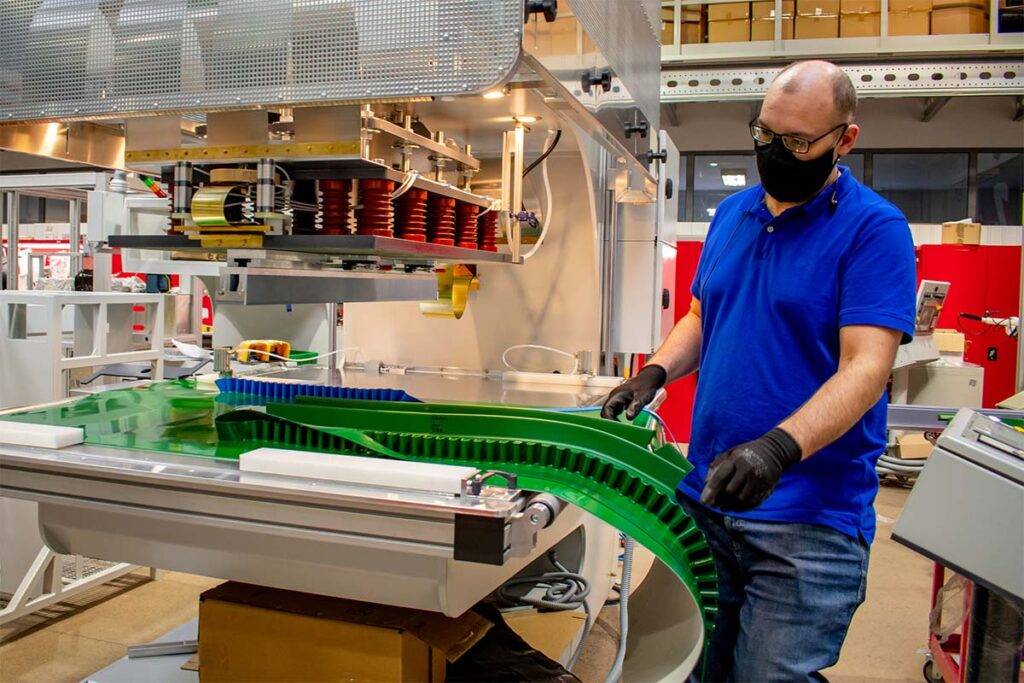High-Quality Conveyor Belts: Ensuring Efficiency in Automation
Widespread automation of production makes the quality of conveyor belts particularly important for fluency, speed and efficiency of operations. Conveyor belts made of thermoplastic elastomers are more and more frequently used. At the same time, the importance of their strength is growing – they are subjected to significant loads and stresses.
Conveyor belts are constructed from one or more layers of material and separate stabilization. The type of belt finishing can be adapted to the transport of a specific product. Hence, conveyor belts are characterized by a particularly wide range of endings and dimensions in terms of width. A silent-running fabric or rubber can be used as the material. The layer of conveyor belts is also finished with the use of materials that are particularly durable and adapted to continuous machine operation. These requirements are filled perfectly by conveyor belts made of thermoplastic elastomers. Machines specializing in their production (e.g. Belta) allow for the implementation of projects perfectly suited to the expectations of customers.
What should characterize good conveyor belts?
The quality of the conveyor belt – especially the material of which it is made – is of particular importance due to the increasing use of this technological method. Their use includes both small lines and extensive lines adapted to, for example, above-average stresses or maintaining above-standard weights. Hence, conveyor belts must combine strength and lightness. They should maintain a controlled stiffness depending on the direction of work – this concerns flexibility in the context of longitudinal movement. More and more emphasis is also placed on making the conveyor belts easier to use than in the past – quick self-assembly, possible maintenance or the option of using the belts in various ways becomes an unquestionable advantage.
Possibilities of using conveyor belts
The range of possibilities of using conveyor belts makes the transmission of things more and more common. The use of these belts is not strictly limited to industry. Conveyor belts are perfect for continuous transmission of both light and heavy products. The possibility of adapting the belts, e.g. through specialized edges, individualized wedges, thresholds and additional edges – extends the scope of application to all industries: from food production to creation of technological lines in the chemical sector.
The universal use of the material and the wide range of belts available on the market allow us to meet more and more specialized expectations. The offer includes not only standard flat belts, but also drive solutions or soft belts with increased grip and greater resistance to cuts or abrasion.
It is worth paying attention to the quality of transport belts made of thermoplastic elastomers. The technology of their production makes them resistant to external factors – such as the mentioned cuts or abrasion – but also to moisture, water and chemicals. These effects are provided due to technology that was used to produce the material. The belts are made in such a way as to minimize the possibility of delamination of the elements. Additional reinforcements made of thermoplastic elastomers contribute to additional strengthening of the material during operation.
The wide range of application of transport belts is also influenced by a wide range of their hardness and friction coefficient. Belt-making machines produce them so in terms of parameters they are ideally suited to the expectations of customers.
As a result, elastomer transport belts are characterized by:
- resistance to oils, water and moisture,
- great independence from industrial chemicals,
- durability of the structure in case of cuts and punctures,
- resistance to heavy abrasion.
Which inustries regularly use conveyor belts?
The features of conveyor belts mean that they have an exceptionally wide industrial application – from the food sector to mechanical transport of wood, ceramic or construction elements. Equally important is the use of conveyor belts in the chemical industry. Thermoplastic elastomers – TPE – as well as PVB, TPU or PU belts are suitable, among others, in the case of technological lines for chemicals and detergents. This also applies to mass production – e.g. BELTA welding machines, using a touchpad and a PLC controller, allow you to set welding parameters within 1000 variants stored in the device’s memory. Thanks to this, it is justified to use the belts also in the production of plastics or the printing industry. The durability of the material is also appreciated in metalurgy and automotive industry, which are assumed to be focused on machine production.


